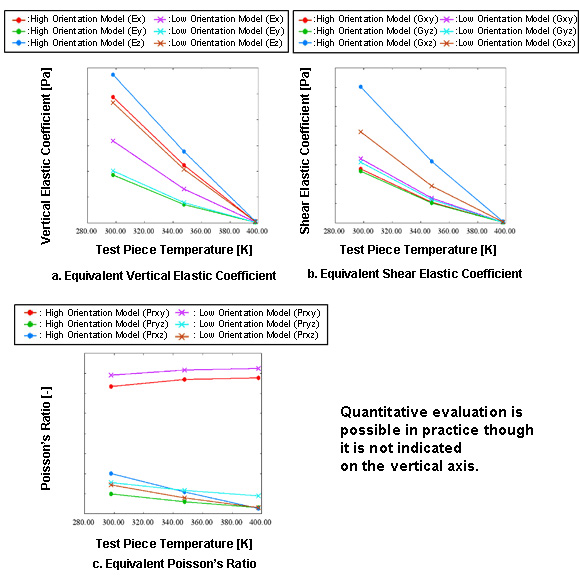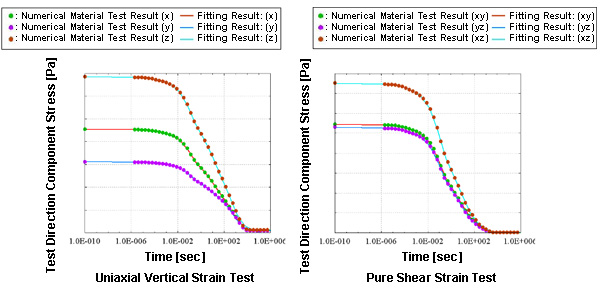.jpg)
It is a big key to increase the test accuracy and how modeling can be accurate from an actual structure in the numerical material test. In here, microstructures of the adhesive in the depth direction plurality were observed with a microscope, and converted to a solid model for CMAS by image processing. Temperature dependences and material property values are defined respectively for resin and filler in the numerical material test. Numerical material tests were performed on respective environmental temperatures in six independent directions, and evaluated equivalent property values of the viscoelasticity and anisotropy of elastic modulus by curve fitting the obtained apparent response.
.jpg)
Figure 2. Numerical Material Test Piece and Flow of Model Creation
.jpg)
Left: High orientation rate model, Right: Low orientation rate model

Figure 4. Elastic Homogenization Analysis
Homogenization Analysis Results (Viscoelasticity Characteristic)
It is also possible to evaluate material response of speed-dependent if the characteristics of the viscoelastic or creep is defined to the resin. In Multisclae.Sim, it is possible to be completed in this one tool to a series of material tests up to physical properties evaluation since the curve fitting feature and anisotropic viscoelastic material constitutive law has been implemented by the user subroutine.
Figure 5 is the results of stress relaxation test in six directions to the low orientation rate model. Anisotropy is also reflected in the relaxation characteristic similar to the elastic modulus. It is possible to observe these responses and able to fit high accuracy in CMAS.

Figure 5. Stress Relaxation Test of Low Orientation Rate Model and Its Fitting Results
Data Providing Source
Associate Professor Yoshiharu Kariya, Shibaura Institute of Technology
Analysis Types
